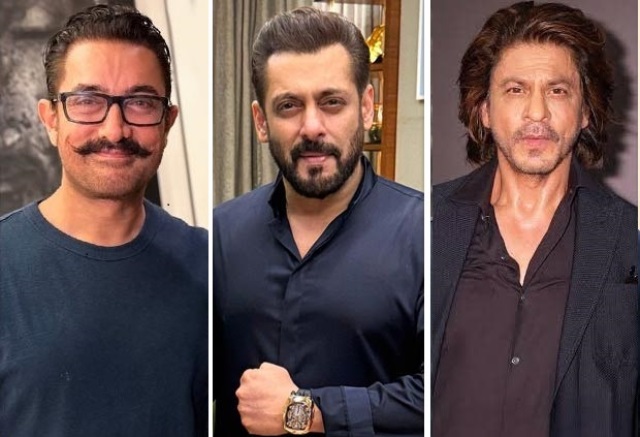
Mumbai Clown Raising Awareness of COVID-19 in Slums
Volunteer social worker Ashok Kurmi is helping an army of young fans fight the coronavirus in Mumbai’s slums using an unusual accessory: a clown costume. Dressed in a bright red clown suit, complete with face paint and a rainbow-hued wig, the 37-year-old executive spends his days off disinfecting public spaces, distributing face masks, and spreading awareness about Covid19. Click here to watch the video.
June 2020- How Asia’s biggest slum contained he coronavirus
In one of the world’s most congested shanty towns, social distancing is not a luxury people can afford. And density is a friend of the coronavirus.
Imagine more than 650,000 people spread over 2.5 grubby sq km, less than a square mile. That’s a population larger than Manchester living in an area smaller than Hyde Park and Kensington Gardens.
Eight to 10 people live together in poky 100 sq ft dwellings. About 80% of the residents use community toilets. Homes and factories coexist in single buildings lining the slum’s narrow lanes. Most people are informal daily-wage workers who don’t cook at home and go out to get their food.

And yet Dharavi, a sprawling slum in the heart of Mumbai, India’s financial and entertainment capital, appears to have brought an outbreak under control – for now.
Since the first case was reported on 1 April, more than 2,000 infections and 80-odd deaths have been reported here. Half of the cases have recovered.
Daily reported infections dropped from a high of 43 a day in May to 19 in the third week of June. The average doubling rate had gone up from 18 days in April to 78 in June.
The scale of the measures put in place – a mix of draconian containment, extensive screening, and providing free food to an out-of-work population – has been extraordinary.
Municipal officials say they have traced, tracked, tested, and isolated aggressively to halt the spread of infection. At the heart of this has been the screening effort, involving fever camps, doorstep initiatives, and mobile vans. The early door-to-door screening by workers in sweltering personal protective gear was not sustainable when the weather turned hot and muggy.
So the effort pivoted to the fever camps, where more than 360,000 people have been screened for symptoms so far.
At each camp, a team of half-a-dozen doctors and health workers in protective clothing screen up to 80 residents every day for temperature and blood oxygen levels using infrared thermometers and pulse oximeters.
People showing flu-like symptoms are tested for the disease on spot. Those who test positive are moved to local institutional quarantine facilities, a bunch of schools, marriage halls, sports complexes. More than 10,000 people have been put into quarantine so far. If their condition deteriorates, patients are moved to public and three private hospitals in the area
Are things still the same in 2021?
As Indian cities face record daily deaths, new cases have plunged in the Mumbai slum in recent weeks as officials bolstered anti-virus measures first put in place last year – from mass testing to disinfections in public areas, including bathrooms.

“The toilet is being cleaned every day since the last year as against once a week earlier. There’s soap and sanitiser and a box for disposing of sanitary pads that were otherwise strewn around,” Shaikh, 30, told the Thomson Reuters Foundation.
“People are also more cautious now: they are using masks and sanitisers … exposure to deaths and infections has made everyone fearful,” said the mother-of-one.
Home to 850,000 people cramped in 55,000 mostly one-room homes, Dharavi’s confirmed coronavirus cases fell to nine on Monday – down from a one-day peak of 99 a month ago, according to local government data.
Residents and local officials say that is largely the result of lessons learned during last year’s first wave of cases when Dharavi defied expectations by tackling an initial surge in infections.
A testing protocol including free tests for tens of thousands of residents was revived as cases crept into double digits, fever camps were set up to scan for symptoms, and quarantine facilities set up last year were reopened.
Despite vaccine shortages, announcements have blared out from loudspeakers across the slum, urging residents to get vaccinated. Another campaign sought to overcome vaccine hesitancy by offering free soap to anyone getting their jab.

“There is a strong community outreach, contact tracing continues and toilets are being deep cleaned with jet sprays,” said Yusuf Kabir, water, sanitation, and health specialist with UNICEF, listing factors that helped the slum turn the tide.
Toilet operators and sanitation workers are more vigilant, Kabir said.
“No one can guarantee it won’t be affected in the third wave. But Dharavi is not complacent,” he said.
About a third of the world’s urban population lives in informal settlements like Dharavi, which lies at the heart of India’s economic hub, according to the United Nations.
Poor living conditions, malnutrition, and weakened immune systems make slum dwellers more vulnerable to contracting infections, disease experts have warned.
Wary of Dharavi’s potential to become a COVID-19 nightmare, Mumbai’s civic officials were closely monitoring cases in the neighbourhood when India’s deadly second wave took hold in March.
Initially, the slum’s quarantine centres were empty. Some experts suggested the metropolis might have moved towards herd immunity following last year’s outbreak.
“Everybody sensed if Dharavi was fine, Mumbai was fine. We slightly misjudged Dharavi’s quiet and calm as everything under control,” said Kiran Dighavkar, an assistant municipal commissioner with Mumbai’s civic body.
Cases in Mumbai and Dharavi steadily increased through March, peaking in April to a daily high of 11,000 cases, before steadily coming down to less than 2,000 on Monday.
“The 15 days from April 10 to 25 were horrible … We were going mad,” Dighavkar said, adding that lessons learned in the slum had helped the city as a whole respond to the crisis.
“We adopted the Dharavi model of aggressive testing and screening. And that actually helped,” Dighavkar said.
Paying Attention
Local politician and Dharavi resident Babu Khan spent years challenging Mumbai’s municipal corporation over poor hygiene, overcrowding, and rubbish-dumping in the slum that heightened the risk of disease.
But the COVID-19 crisis has forced both authorities and local people to rethink sanitation and public health issues.
“The coronavirus has changed a lot: doctors, health posts, ward officers are paying attention. Dharavi has got the attention we had been seeking all these years,” he said.
Local residents are more cautious, too, and the slum’s narrow streets are cleaner.
“After the first COVID-19 death in Dharavi last year, there was panic among people. They became alert and realised they had to save themselves,” Khan said.
Local doctor Sudhir Patil who has been practicing in Dharavi for years said the number of asthmatic bronchitis and tuberculosis cases has dropped over the last year as residents wear masks and take better care of their diets.
Despite a cautious optimism that the worst is over, officials are already making plans for a possible third wave, including setting up facilities for children, who are not yet eligible for vaccination.
“We can’t assume everything is okay… every wave has its own challenges,” said Dighavkar.
“But there is a positive impact of these changes in Dharavi on children who have had an early exposure to good habits. And that will be a permanent change.”



